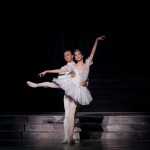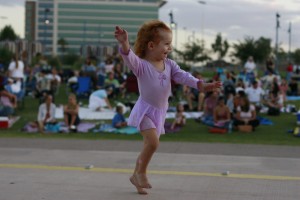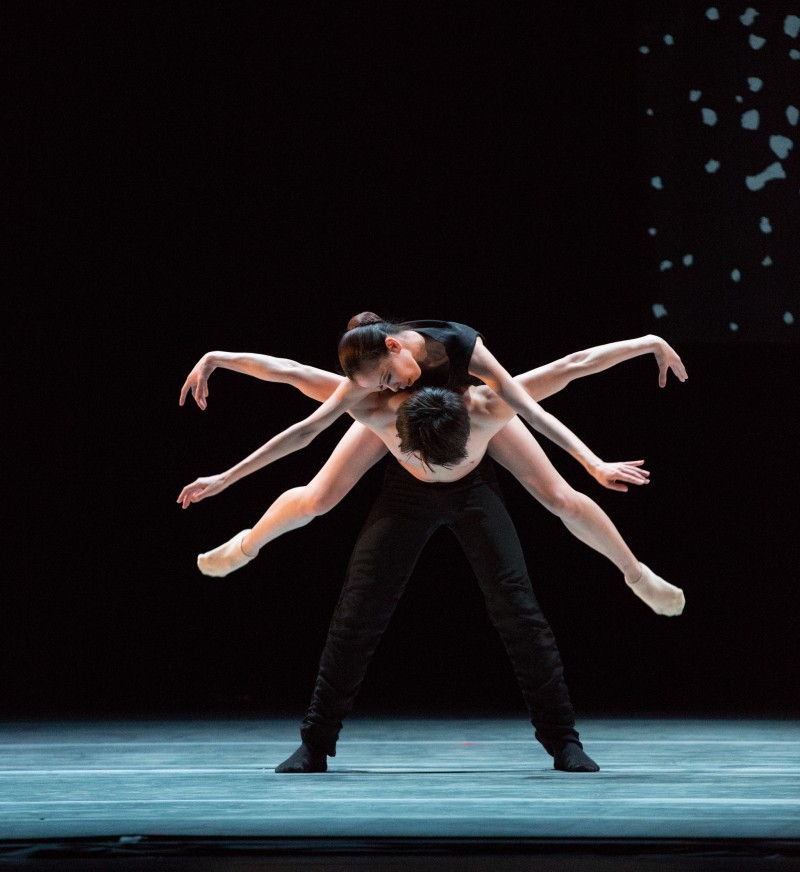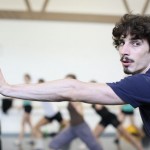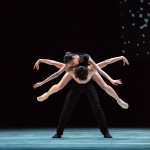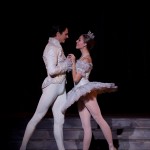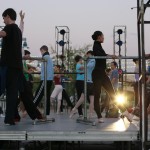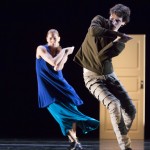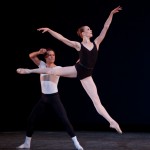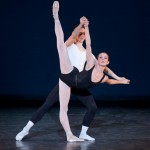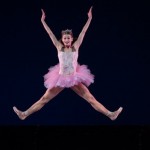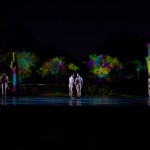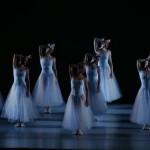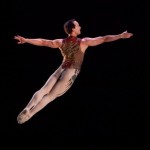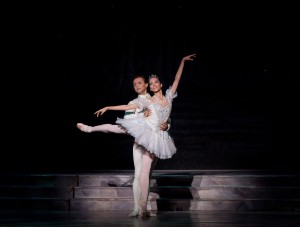
Ballet Arizona (credit: Rosalie O’Connor)
Under the sky, ballet has a completely different feel from the formality and tension of an indoor performance. Anything can happen — wind, stars, insects, and audience all add layers of natural art to even the most carefully planned production.
Each September, Ballet Arizona continues a 15-year tradition of free outdoor community performances at parks across the Valley, this year making stops in Casa Grande, Sun City West, Goodyear, Fountain Hills, Phoenix, and Tempe. On a portable elevated stage complete with lighting and music, costumed dancers share choreography by the iconic George Balanchine, up-and-coming young artist Alejandro Cerrudo, and Ballet Arizona’s own artistic director, Ib Andersen.
On Saturday, September 28, Ballet Under the Stars comes to Steele Indian School Park at 7 p.m., and downtowners can experience a bit of the glorious uncertainty of a live outdoor performance. While the professionals warm up, it’s not uncommon to see a handful of tiny would-be dancers leaping and spinning on grass and sidewalks between lawn chairs and blankets. They’re perfectly prepared to see scenes from Andersen’s luscious Cinderella, set to music by Sergei Prokofiev and featuring fairies, cavaliers, Cinderella, and her prince.
From the classical Cinderella, en pointe in tutus, the program shifts to a contemporary work: Cerrudo’s Second to Last, commissioned by Ballet Arizona for a world premiere this past March. The Spanish-born dancer, who works with Hubbard Street Dance Chicago, cites major influence from choreographers Jiří Kylián, Ohad Naharin, and Mats Ek as well as Freddie Mercury.
“I have influences from choreographers that I don’t even like,” Cerrudo declares. “I think everybody does — I think everything that you see, touch, smell, read, see, will influence you for good or for bad. Sometimes you see something and you’re like, ‘Oh, I really need to go the opposite of that in my work, because I see how that makes me feel, or I just don’t like the aesthetics’…and then the opposite way, as we grow up…you create your idea of beauty.”
He continues, “Europe is ahead of us right now in dance, in the sense that they produce more and they’re more progressive. But…I feel like I have a little place here where I can help and promote that growth and…evolution of dance in the States very humbly.”
Second to Last was a lovely revelation at its spring performances, a sensual exploration of every possibility of movement between two dancers. “People should come and see it,” says Cerrudo earnestly, “because it’s not meant to be explained with words…[it’s] meant to be experienced.”
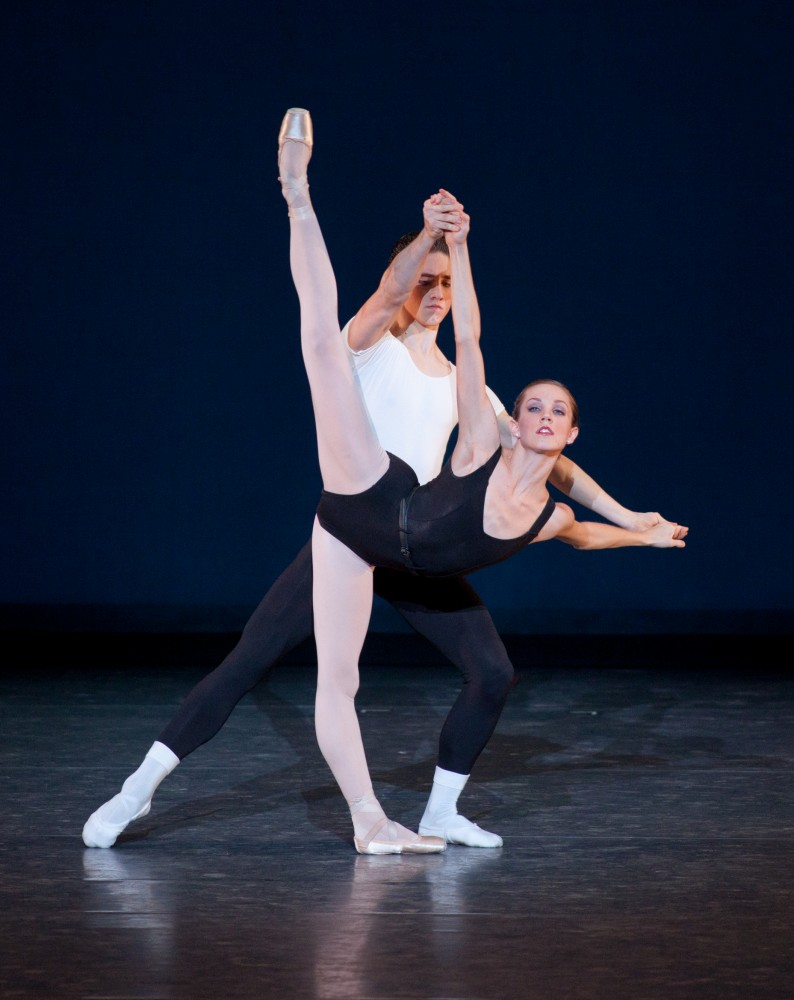
“The Four Temperaments,” choreography George Balanchine ©The George Balanchine Trust. Photo ©Rosalie O’Connor.
During Ballet Under the Stars, students from Clarendon Elementary School take the stage as Class Act, an after-school program guided by Ballet Arizona dancers in which the students choreograph and premiere a new work.
The evening ends with Balanchine’s The Four Temperaments, with music for strings and piano commissioned from Paul Hindemith by the choreographer in 1940. Three themes danced by three successive couples broaden into variations named after the four humors of the human body specified in medieval cosmology, beginning with melancholic (analytical), continuing with sanguinic (sociable) and phlegmatic (calm), and ending with choleric (ambitious).
If you can’t make it to Ballet Under the Stars, consider visiting Ballet Arizona’s huge new dance center during its grand opening on October 12 from 10:30 a.m to 2 p.m. — it includes free performances, classes, and tours with a drawing for season tickets.
More information:
- Ballet Under the Stars
- Ballet Arizona’s Cinderella — Oct. 30 through Nov. 3 with The Phoenix Symphony at Symphony Hall
- Choreographer Alejandro Cerrudo
- George Balanchine’s ballet The Four Temperaments
- The Balanchine Trust
- The Balanchine Foundation
- Ballet Arizona’s past program Director’s Choice
- Ballet Arizona’s past program All Balanchine
- Ballet Arizona’s grand opening on Oct. 12
2836 E. Washington St., Phoenix, 85034
- Alejandro Cerrudo in rehearsal with Hubbard Street Dance Chicago (credit: Todd Rosenberg Photography)
- Ballet Under the Stars (credit: Rosalie O’Connor)
- Alejandro Cerrudo (credit: Todd Rosenberg)
- Ballet Arizona (credit: Rosalie O’Connor)
- Alejandro Cerrudo (credit: Jim Newberry)
- Ballet Arizona in Alejandro Cerrudo’s “Second to Last” (credit: Rosalie O’Connor)
- Enthusiasm for Ballet Under the Stars (credit: Rosalie O’Connor)
- Alejandro Cerrudo (credit: Jim Newberry)
- “The Four Temperaments,” choreography George Balanchine ©The George Balanchine Trust. Photo ©Rosalie O’Connor.
- Ballet Arizona — Ib Andersen’s “Cinderella” (credit: Rosalie O’Connor)
- Ballet Under the Stars (credit: Rosalie O’Connor)
- Alejandro Cerrudo in rehearsal with Ballet Arizona (credit: Natalie Salvione)
- Alejandro Cerrudo with Hubbard Street Dance Chicago (credit: Todd Rosenberg Photography)
- “The Four Temperaments,” choreography George Balanchine ©The George Balanchine Trust. Photo ©Rosalie O’Connor.
- “The Four Temperaments,” choreography George Balanchine ©The George Balanchine Trust. Photo ©Rosalie O’Connor.
- Alejandro Cerrudo in rehearsal with Ballet Arizona (credit: Natalie Salvione)


